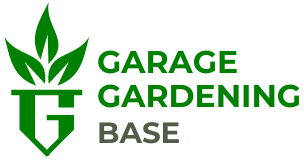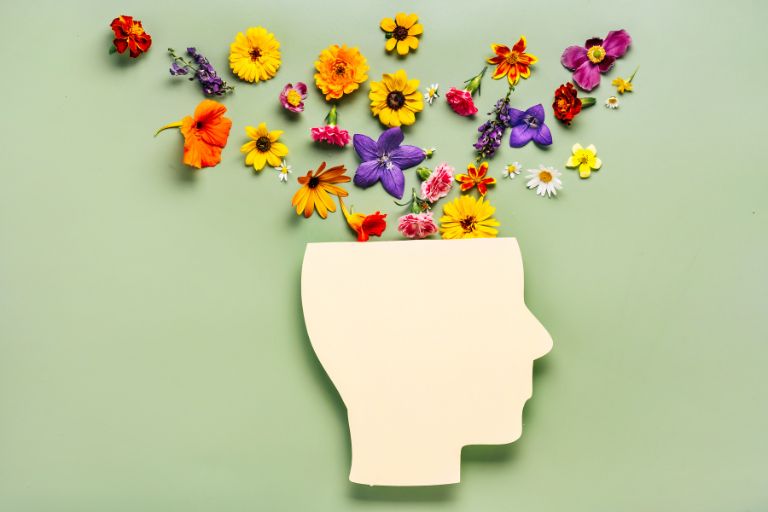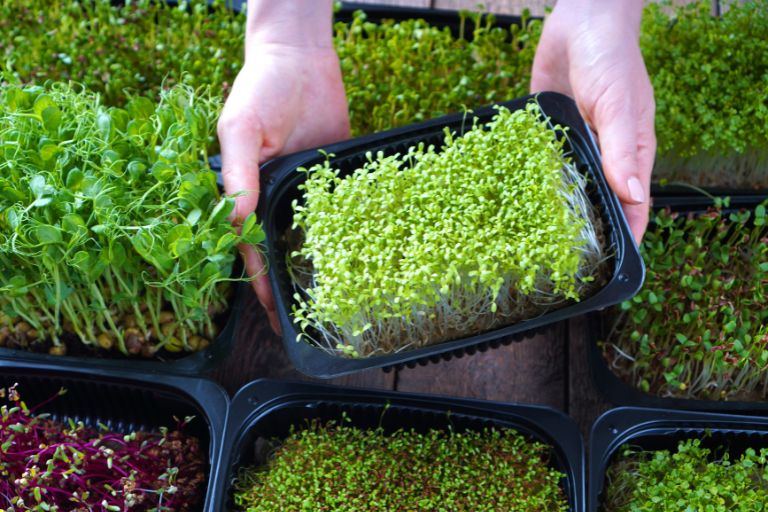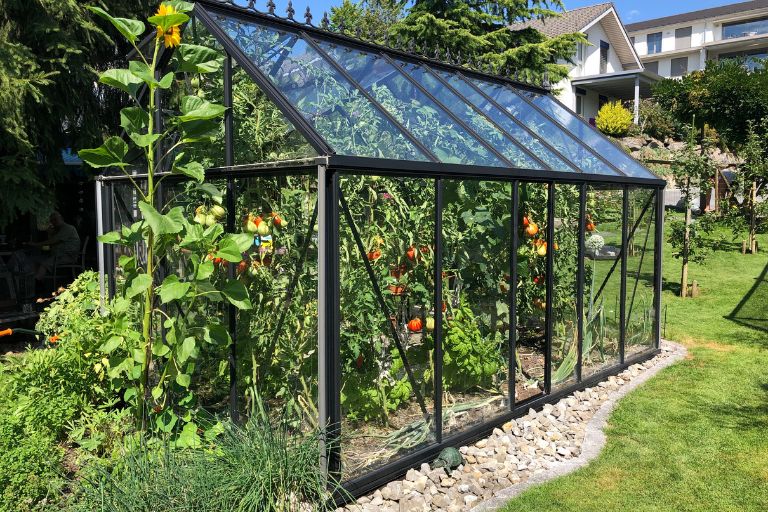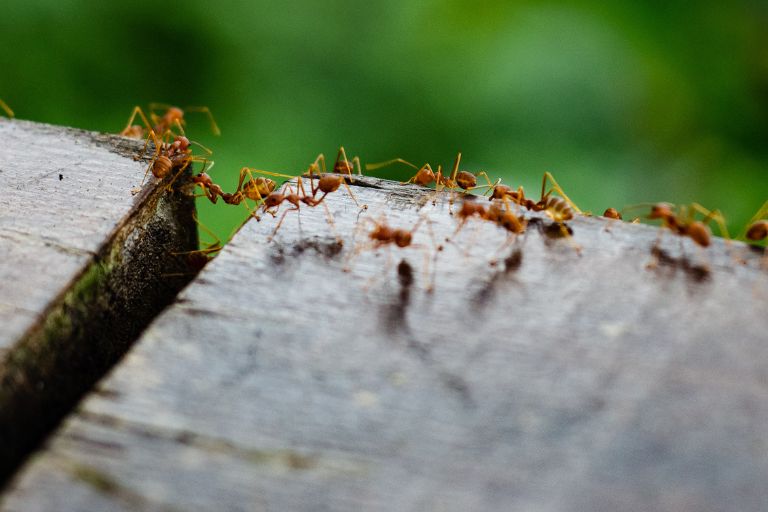Harmony in Horticulture: A Guide to Successful Companion Planting in Your Garage Garden
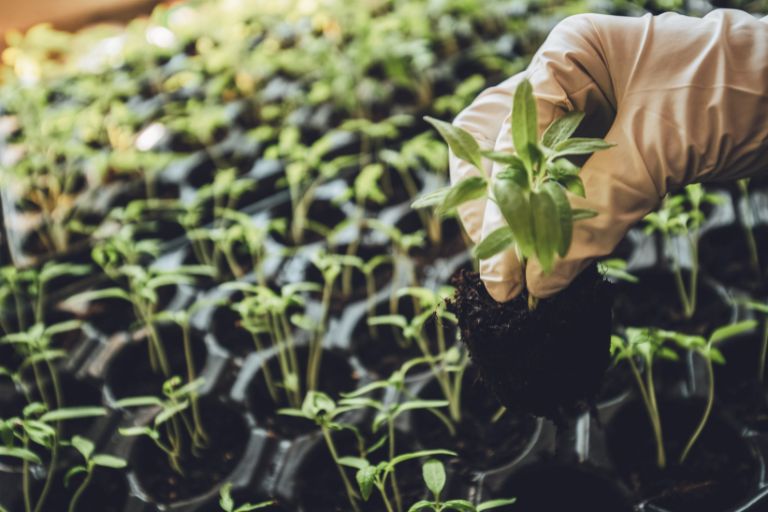
Looking for a new way to add some greenery to your life, but don’t have the space for a traditional outdoor garden? Consider companion planting in your garage! Companion planting is a technique that involves planting different types of plants together to create a mutually beneficial relationship. By growing plants in the garage, you can protect them from pests and harsh weather conditions, while still enjoying the benefits of fresh produce and beautiful flowers. Whether you’re an experienced gardener or just starting out, garage companion planting is a great way to bring nature into your home and improve indoor air quality. In this article, we’ll look at the basics of companion planting, the benefits of growing plants in the garage, and give you practical tips for creating a thriving indoor garden.
What is Companion Planting?
Companion planting is a gardening technique that involves planting two or more plant species together to create a mutually beneficial relationship. When done correctly, companion planting can help to improve soil health, increase yields, and deter pests and disease. While this technique is often associated with outdoor gardening, it can also be applied to indoor gardening, such as in the garage. In fact, growing plants in the garage offers many advantages, including protection from pests and weather, and the convenience of having fresh produce at hand. By understanding the principles of companion planting and selecting the right plant combinations, it is possible to create a thriving indoor garden in the garage. Some key aspects of companion planting include:
Pest control – Some plants release natural compounds or scents that repel pests, while others attract beneficial insects that prey on pests. For example, planting marigolds near tomatoes can help repel nematodes, while planting basil near tomatoes can deter tomato hornworms.
Soil improvement – Certain plants have deep root systems that can break up compacted soil or draw nutrients from deeper layers to benefit neighbouring plants with shallower roots. For example, planting nitrogen-fixing legumes such as peas or beans can improve soil fertility for nearby crops.
Attract pollinators – Many flowering plants attract pollinators such as bees and butterflies, which are essential for pollinating fruit and vegetable crops. Spreading flowering plants around the garden can increase pollination and improve yields.
Complementary growth patterns – Companion planting can also take advantage of plants’ growth habits to maximise space and resources. For example, planting tall, sun-loving crops such as maize next to low-growing, shade-tolerant crops such as lettuce can make efficient use of space and sunlight.
Companion planting is a sustainable and environmentally friendly gardening practice that uses the natural relationships between plants to create a balanced and thriving ecosystem. It can help improve plant health, reduce the need for chemical pesticides and increase overall garden productivity.
Benefits of Companion Planting in the Garage
Companion planting in the garage offers several advantages, especially for indoor gardening situations where space and environmental control are limited. Some advantages are:
Pest control – Companion planting in the garage can help control pests that can attack houseplants. Certain companion plants emit odours or compounds that repel pests, reducing the need for chemical pesticides. For example, planting aromatic herbs such as basil, mint or rosemary can deter common indoor pests such as aphids, spider mites or whiteflies.
Pollination – Even indoors, some plants need pollination to produce fruit or seeds. Companion planting with flowering plants can attract pollinators such as bees or butterflies, aiding pollination and improving yields. For example, planting flowers such as marigolds or lavender next to fruiting plants can encourage pollinator activity.
Soil health – Companion planting with nitrogen-fixing plants or dynamic accumulators can improve soil fertility even in a confined space such as a garage. Legumes such as peas or beans can fix nitrogen from the air, enriching the soil with this essential nutrient for the benefit of neighbouring plants. In addition, plants with deep taproots, such as comfrey, can help bring up nutrients from deeper layers of the soil and make them available to other plants.
Optimise space – Companion planting allows for efficient use of space in a garage garden. By choosing plants that complement each other in terms of growth habits, space requirements and light preferences, you can maximise the use of available space and achieve higher yields. For example, planting trailing or vining plants such as tomatoes or cucumbers next to vertical supports can make effective use of vertical space.
Aesthetic appeal – Companion planting can enhance the visual appeal of a garage garden by adding variety and colour to the space. Mixing different types of plants with different heights, textures and colours creates an attractive and dynamic garden display.
Complementary benefits – Some companion plants provide additional benefits beyond pest control and soil fertility. For example, planting aromatic herbs such as lavender or lemon balm in the garage can improve air quality and create a pleasant atmosphere.
Companion planting in the garage can contribute to the success and sustainability of indoor gardening endeavors by promoting plant health, enhancing productivity, and creating a more balanced and resilient ecosystem within a confined space.
Choosing the Right Plants for Companion Planting
When choosing companion plants, it’s important to consider their compatibility in terms of growth habits, nutritional requirements and pest control. Some important notes to consider when choosing companion plants for a garage garden are:
Complementary growth habits – Choose plants that have complementary growth habits to make the most efficient use of space. For example, pairing tall plants that need support, such as tomatoes or peppers, with low-growing ground covers, such as marigolds or thyme, can maximise vertical space.
Nutrient requirements – Choose crops with similar nutrient needs to avoid competition for resources. In addition, consider planting nitrogen-fixing legumes such as peas or beans alongside nitrogen-loving crops to improve soil fertility.
Pest management – Look for plants that have natural pest-repelling properties or attract beneficial insects. For example, planting aromatic herbs such as basil, mint or coriander can deter pests such as aphids, while attracting predatory insects such as ladybugs or lacewings.
Disease resistance – Choose plant combinations that can help reduce the risk of disease spread. Some plants have natural properties that can suppress soil-borne diseases or inhibit the growth of pathogens. For example, growing onions or garlic next to susceptible crops such as tomatoes can help prevent fungal diseases.
Successive planting – Consider planting crops with different maturity dates to ensure a continuous harvest throughout the growing season. Succession planting allows you to replant areas as crops are harvested, maximising productivity in a limited space.
Companion planting charts – Consult companion planting charts or guides to identify compatible plant combinations and avoid potentially harmful pairings. These resources provide valuable information on which plants complement each other and which should be kept separate due to potential negative interactions.
Taking these factors into consideration and selecting appropriate companion plants for your garage garden, you can create a diverse and mutually beneficial planting scheme that promotes plant health, reduces pest pressure, and enhances overall garden productivity.
Creating an Indoor Garden
Creating an indoor garden in your garage can be a rewarding and enjoyable project. Below is a step-by-step guide to help you get started:
Choose a suitable location – Choose an area in your garage that receives adequate natural or artificial light. Consider installing additional grow lights if natural light is limited. Make sure the area has access to electrical outlets for lighting and other equipment.
Choose containers – Choose containers that suit the size and growth requirements of your plants. Options include pots, grow bags, hanging baskets or vertical planters. Make sure containers have proper drainage holes to prevent waterlogging. You can reuse containers or buy new ones from garden centres.
Prepare the soil or growing medium – Depending on the plants you’re growing, choose an appropriate potting mix or growing medium. For indoor gardening, a well-draining, nutrient-rich potting mix is often preferred. Fill containers with the potting mix, leaving some space at the top for watering.
Choose your plants – Select plants that are well suited to indoor growing conditions and compatible with the light available in your garage. Consider factors such as space requirements, light preferences and growth habits. Popular choices for indoor gardening include herbs, leafy greens, dwarf fruit varieties and ornamental houseplants.
Plant your garden – Carefully plant your chosen plants in the prepared containers, following the recommended spacing and planting depths for each plant. Firmly compact the soil around the roots and water well after planting.
Provide adequate lighting – Make sure your plants get enough light for healthy growth. Place containers near windows to maximise natural light, or install grow lights above the garden area. Adjust light fixtures to maintain an appropriate distance from plants to prevent light burns or stretching.
Watering – Develop a regular watering schedule based on the moisture needs of your plants and the drying rate of the soil. Check soil moisture regularly by inserting your finger into the soil and water when the top inch feels dry. Use a watering can or mist to water plants evenly to avoid waterlogging or drought stress.
Fertilising – Indoor plants benefit from regular fertilising to replenish the nutrients in the soil. Choose a balanced, water-soluble fertilizer or a slow-release fertilizer specifically formulated for indoor plants. Follow the package instructions for dilution rates and frequency of application, usually every 2-4 weeks during the growing season.
Monitor and maintain – Inspect plants regularly for signs of pests, disease or nutrient deficiencies. Prune or trim plants as needed to maintain shape and promote healthy growth. Keep the growing area clean and organised to prevent pest infestations and promote optimal growing conditions.
Enjoy your indoor garden – Take time to appreciate the beauty and bounty of your indoor garden. Harvest fresh herbs, vegetables or fruit as they mature and enjoy the satisfaction of growing your own food and greenery all year round.
Follow these steps and ensuring proper care and maintenance and you can create a thriving indoor garden in your garage and enjoy the benefits of gardening regardless of outdoor conditions.

Companion Planting Combinations
Some popular companion planting combinations for indoor gardens, along with tips on how to pair plants for optimal growth and yield include:
Tomatoes and basil – Basil repels pests such as aphids, tomato hornworms and whiteflies, while enhancing the flavour of tomatoes. Plant basil around the base of tomato plants or plant them together in the same container. Make sure both plants receive plenty of sunlight and water. Pinch off basil flowers to encourage bushier growth and prolong the harvest.
Lettuce and radishes – Radishes help deter pests such as cucumber beetles and rust flies, while lettuce acts as a living mulch, conserving soil moisture and suppressing weeds. Sow radish seeds thinly between rows of lettuce or as a border around lettuce containers. Harvest radishes early to avoid overcrowding and competition with lettuce.
Cucumbers and nasturtiums – Nasturtiums repel pests such as aphids, cucumber beetles and squash bugs, while attracting beneficial insects such as predatory wasps. Plant nasturtiums along the edges of cucumber containers or allow them to spill over trellises or supports. Regularly deadhead spent nasturtium flowers to encourage continuous flowering.
Peppers and marigolds – Marigolds repel nematodes, aphids and other pests, while attracting beneficial insects such as ladybugs. They also add colour and vibrancy to the garden. Plant marigolds as border plants around pepper containers or between pepper beds. Choose varieties with strong-smelling foliage, such as French marigolds, for maximum pest-repelling effect.
Spinach and strawberries – Spinach acts as a living mulch, shading the soil and conserving moisture for strawberries. Meanwhile, strawberries help suppress weeds and provide ground cover. Plant strawberries in hanging baskets or containers with trailing varieties of spinach. Leave plenty of space between plants to prevent overcrowding and promote air circulation.
Carrots and onions – Onions repel carrot rust flies and other pests, while carrots help break up compacted soil, making it easier for onions to grow. Intercrop rows of carrots with rows of onions or plant them in alternating patterns in the same container. Avoid planting dense rows of onions as this can inhibit carrot growth.
When pairing companion plants, consider their growth habits, nutrient requirements and compatibility to ensure they thrive together. Monitor plants regularly for signs of stress, pests or disease, and adjust planting arrangements or practices as needed to promote optimal growth and yield.
Maintenance And Troubleshooting
Maintaining your indoor garden requires regular care and attention to ensure that the plants remain healthy and productive. Some maintenance and troubleshooting tips for caring for your indoor plants include:
Watering – Water plants thoroughly when the top inch of soil feels dry, but avoid overwatering as this can cause root rot. Use a watering can with a fine nozzle or a gentle spray nozzle to water plants evenly and avoid disturbing the soil. Ensure containers have good drainage to allow excess water to escape and prevent waterlogging.
Lighting – Place plants near windows where they can receive adequate natural light, or supplement with grow lights if natural light is limited. Adjust luminaires to maintain an appropriate distance from plants to avoid light burns or stretching. Rotate plants regularly to ensure even light exposure and promote balanced growth.
Fertilise – Feed plants with a well-balanced, water-soluble fertiliser or a slow-release fertiliser formulated for houseplants.
Follow package instructions for dilution rates and frequency of application, typically every 2-4 weeks during the growing season. Avoid over-fertilising as this can cause nutrient imbalances and damage to plant roots.
Pest prevention – Inspect plants regularly for signs of pests such as aphids, spider mites or whiteflies. Remove and dispose of affected leaves or plants to prevent pest infestations from spreading. Encourage natural predators such as ladybugs or lacewings by providing habitat and avoiding the use of broad-spectrum pesticides. Consider companion planting with pest-repellent herbs or flowers to deter common garden pests.
Disease prevention – Practice good hygiene by keeping the growing area clean and free of debris. Avoid overhead watering, which can promote fungal diseases by splashing soil onto leaves. Provide adequate air circulation around plants to reduce humidity levels and prevent fungal growth. Use sterile potting mix and containers to minimise the risk of soil-borne diseases. Monitor plants regularly for signs of disease, such as yellowing leaves, wilting or unusual spots, and treat any problems promptly.
Troubleshooting common problems
Yellowing leaves – Often a sign of overwatering, lack of nutrients or inadequate light. Adjust watering, fertilise as needed and make sure plants get enough light.
Wilting – May indicate underwatering, overwatering, root rot or pest damage. Check soil moisture levels and inspect roots for signs of rot or pests.
Leaf spots or discolouration – May be caused by fungal or bacterial diseases, nutrient deficiencies or environmental stress. Remove affected leaves, improve air circulation and avoid overhead watering.
Following these maintenance and troubleshooting tips will help keep your indoor garden healthy and thriving, minimising the risk of pests, diseases and other common problems. Regular monitoring and proactive maintenance are key to ensuring the success of your indoor gardening endeavours.
Harvesting and Using Your Crops
Harvesting and using your indoor garden produce is one of the most rewarding aspects of gardening. Some common tips on harvesting, using and storing herbs and vegetables from your indoor garden include:
Harvesting – Harvest herbs and vegetables in the morning when their flavours and aromas are most concentrated. Use clean, sharp scissors or pruning shears to harvest herbs and vegetables to minimise damage to the plants. Harvest leafy greens and herbs regularly by cutting off the outer leaves or stems, leaving the inner part of the plant to continue growing.
Harvest fruit and vegetables when they are ripe but still firm to the touch, using a gentle twisting or cutting motion to avoid damaging the plant.
Use fresh herbs – Fresh herbs are best used as soon as they are harvested for maximum flavour and aroma. Add fresh herbs to salads, soups, stews, sauces, marinades and dressings for a burst of flavour. Use fresh herbs as garnishes for a decorative touch and to add flavour to dishes.
Storing fresh herbs – To extend the shelf life of fresh herbs, place them in a jar or glass of water, similar to a bouquet of flowers, and store in the refrigerator. Alternatively, wrap fresh herbs in damp paper towels and place in a resealable plastic bag in the fridge. Some herbs, such as basil and parsley, can be stored at room temperature in a glass of water on a countertop, out of direct sunlight.
Preserving herbs – Preserve excess herbs by drying, freezing, or making herb-infused oils or vinegars. To dry herbs, tie them into small bundles and hang them upside down in a warm, dry place until they are completely dry. When dry, remove the leaves from the stems and store in an airtight container. Freeze fresh herbs by chopping them finely and placing them in ice cube trays filled with water or olive oil. Once frozen, transfer the herb cubes to a resealable plastic bag for long-term storage.
Use fresh vegetables – Fresh vegetables from your home garden can be used in a variety of dishes, including salads, stir-fries, soups, sandwiches and wraps. Experiment with different cooking methods such as roasting, grilling, steaming or sautéing to showcase the flavours and textures of your homegrown vegetables.
Storing fresh vegetables – Store fresh vegetables in the refrigerator in perforated plastic bags or containers to maintain moisture and prevent wilting. Some vegetables, such as carrots, radishes and beets, can be stored for several weeks in the refrigerator’s crisper drawer. Leafy vegetables should be kept in the fridge wrapped in damp paper towels or cloth to prevent wilting and spoilage.
Follow the tips above for harvesting, using and storing herbs and vegetables from your indoor garden allowing you to enjoy a bountiful harvest and the flavours of your home-grown produce all year round.
Companion planting in the garage is an excellent way to grow fresh herbs, vegetables, and flowers year-round. By carefully selecting complementary plants and providing the right conditions for growth, you can create a mutually beneficial ecosystem that enhances the health and productivity of your plants. When setting up your indoor garden, choose plants that are well-suited to indoor growing conditions and pair them together for optimal growth and yield. Make sure to use appropriate containers, soil, and fertilizers, and monitor your plants regularly for pests and disease. By caring for your indoor garden properly, you can enjoy fresh produce right from your garage, and store and preserve your herbs and vegetables for later use. Whether you’re a seasoned gardener or a beginner, companion planting in the garage is a fun and rewarding way to connect with nature and enjoy the fruits of your labour.
